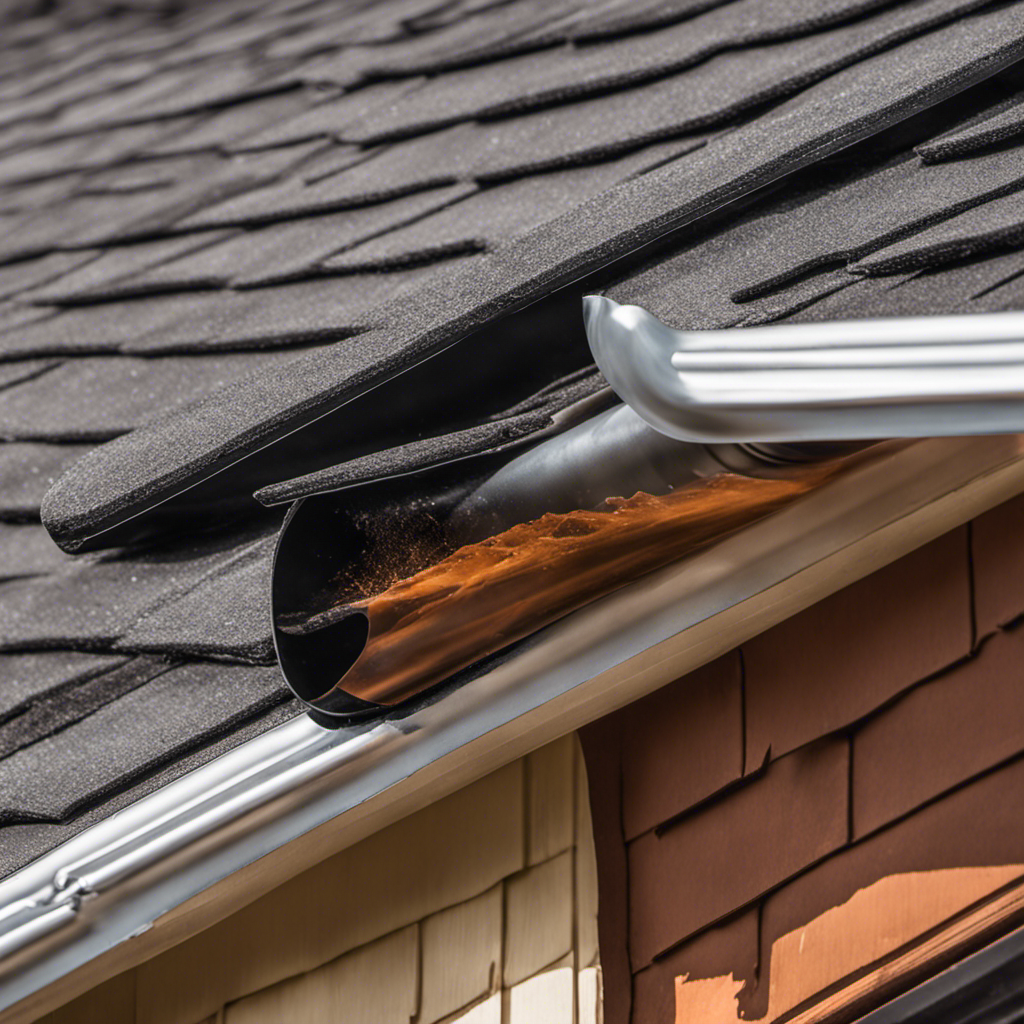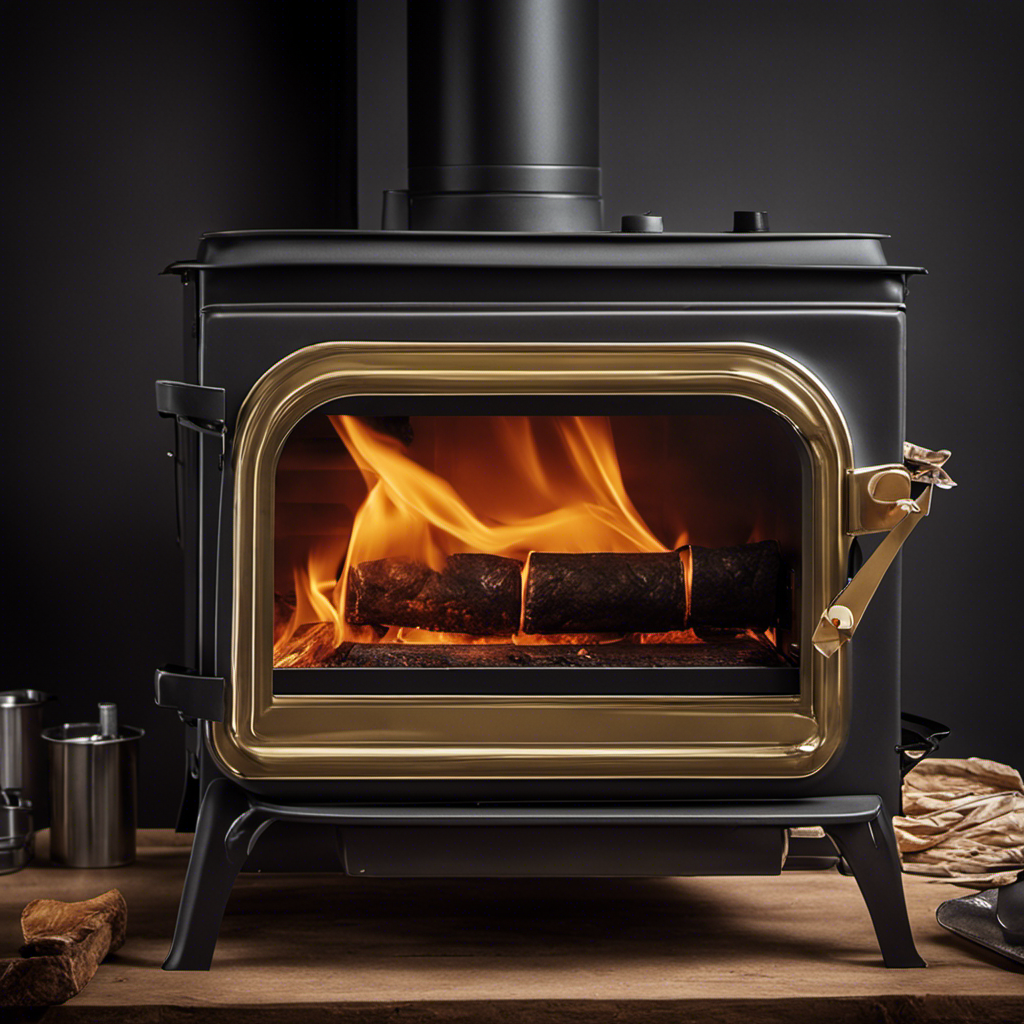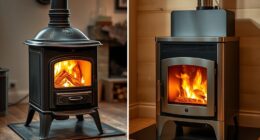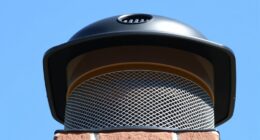Did you know that installing a wood stove chimney via a flat roof could boost your heating system’s efficiency by up to 30%?
In this article, I will guide you through the step-by-step process of installing a wood stove chimney through a flat roof.
From assessing the roof structure to ensuring proper ventilation and safety measures, you’ll learn everything you need to know to complete this project with confidence and precision.
Key Takeaways
- Evaluate the stability of the roof structure and ensure it can support the chimney
- Select the appropriate chimney system based on material, size, and compliance with building codes
- Prepare the roof by making necessary repairs, waterproofing, and applying sealant around the chimney penetration area
- Ensure proper ventilation and safety measures such as insulation, regular chimney cleaning, and installation of carbon monoxide detector and fire extinguisher.
Assessing the Roof Structure
I’m evaluating the roof structure to determine the best location for the wood stove chimney.
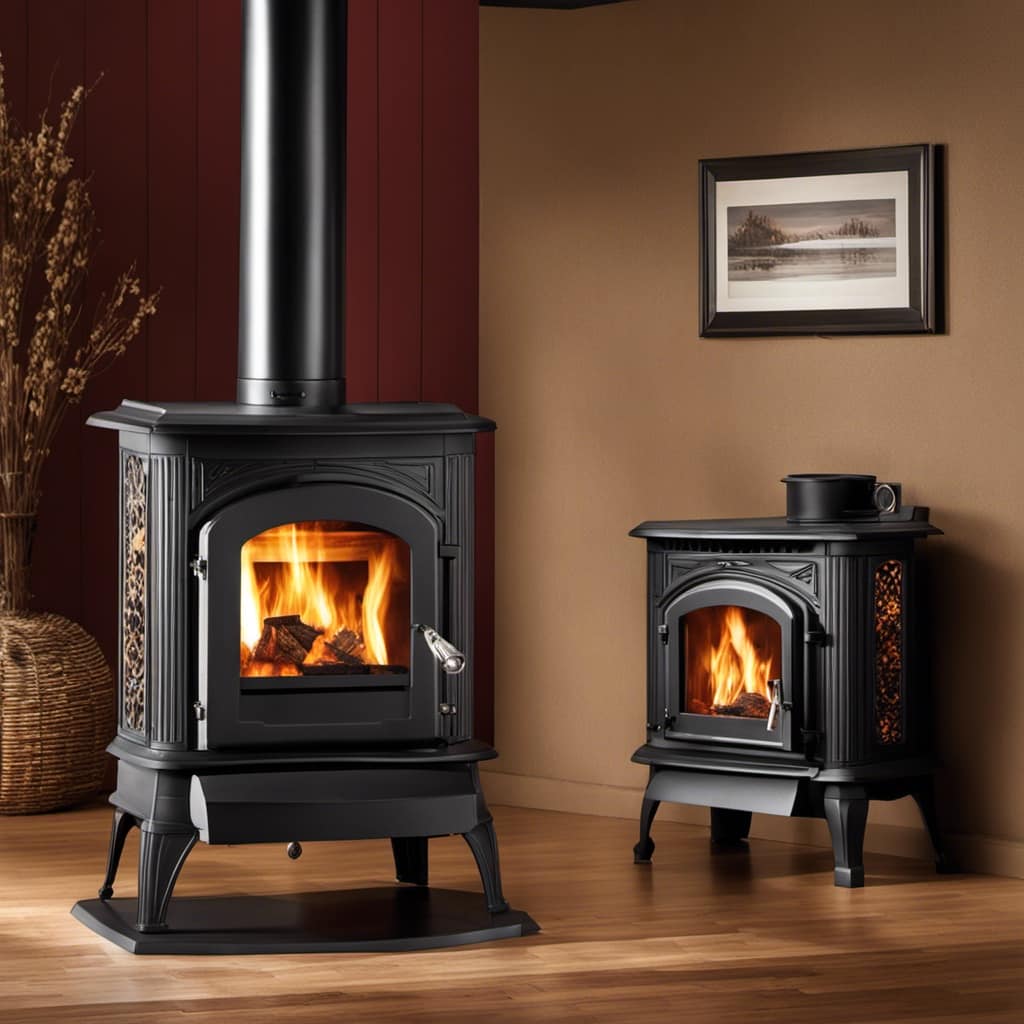
When it comes to installing a wood stove chimney through a flat roof, it’s crucial to assess the stability of the structure and evaluate its ability to support the weight of the chimney. I carefully inspect the roof beams and joists to ensure they’re in good condition and capable of bearing the additional load. It’s essential to consider the materials used in constructing the roof and their strength.
I also take into account the placement of existing vents, pipes, and other obstacles that may hinder the installation process. By thoroughly assessing the roof structure, I can determine the safest and most suitable location for the wood stove chimney, ensuring both stability and proper weight distribution.
Choosing the Right Chimney System
When it comes to selecting the proper chimney system, it’s important to consider factors such as material, size, and insulation.
Material: Choosing the right material for your chimney system is crucial for its durability and efficiency. Options include stainless steel, clay tile, and insulated metal. Stainless steel is a popular choice due to its resistance to corrosion and ability to withstand high temperatures.
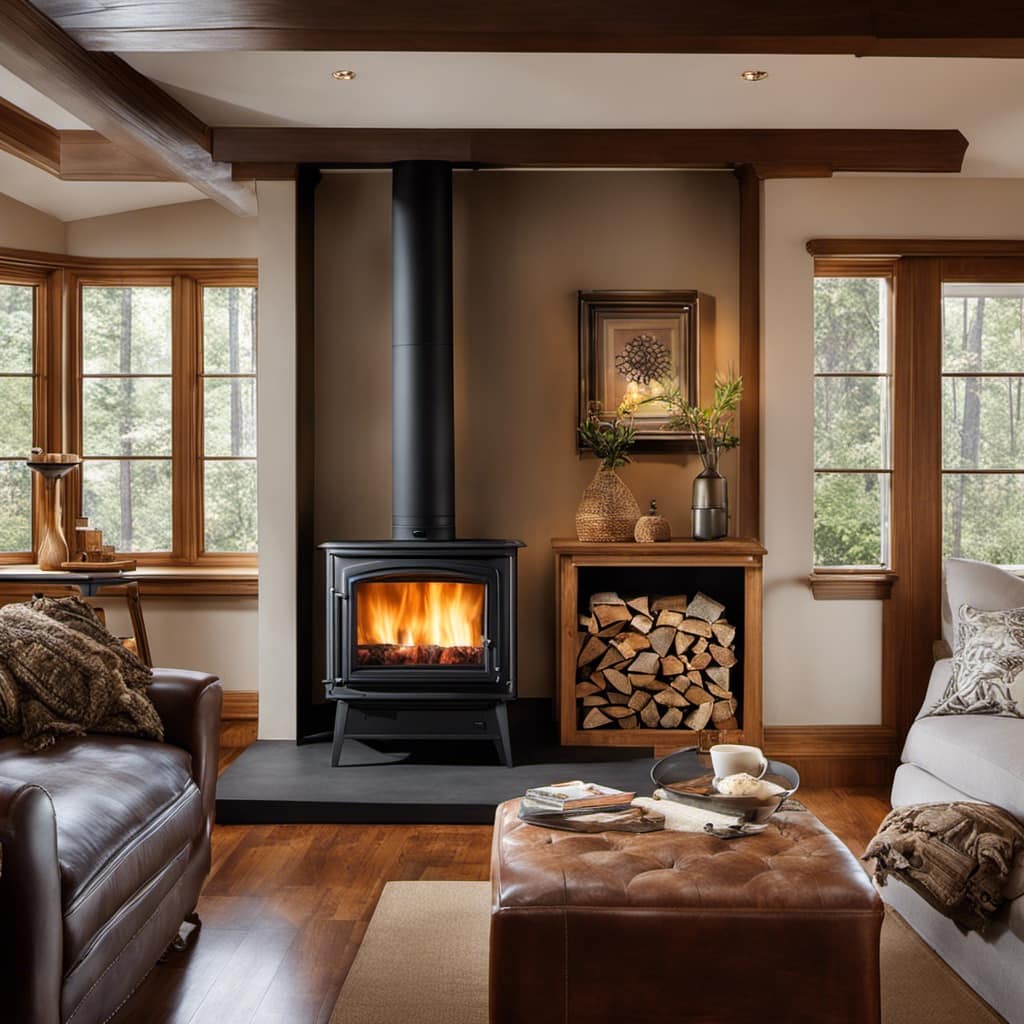
Size: The size of your chimney should be determined by the size and type of wood stove you plan to install. The chimney should be properly sized to allow for proper draft and optimal performance.
Insulation: Insulating your chimney is essential to prevent heat loss and improve efficiency. Insulated chimneys help to maintain a constant temperature, reducing the risk of creosote buildup and the need for frequent chimney maintenance.
Additionally, chimney height is an important consideration when selecting a chimney system. The height of the chimney should comply with local building codes and regulations to ensure proper ventilation and safety. It’s always best to consult with a professional to determine the appropriate chimney height for your specific installation.
Preparing the Roof for Installation
To ensure a successful installation, it’s important to properly prepare the roof by assessing its condition and making any necessary repairs.
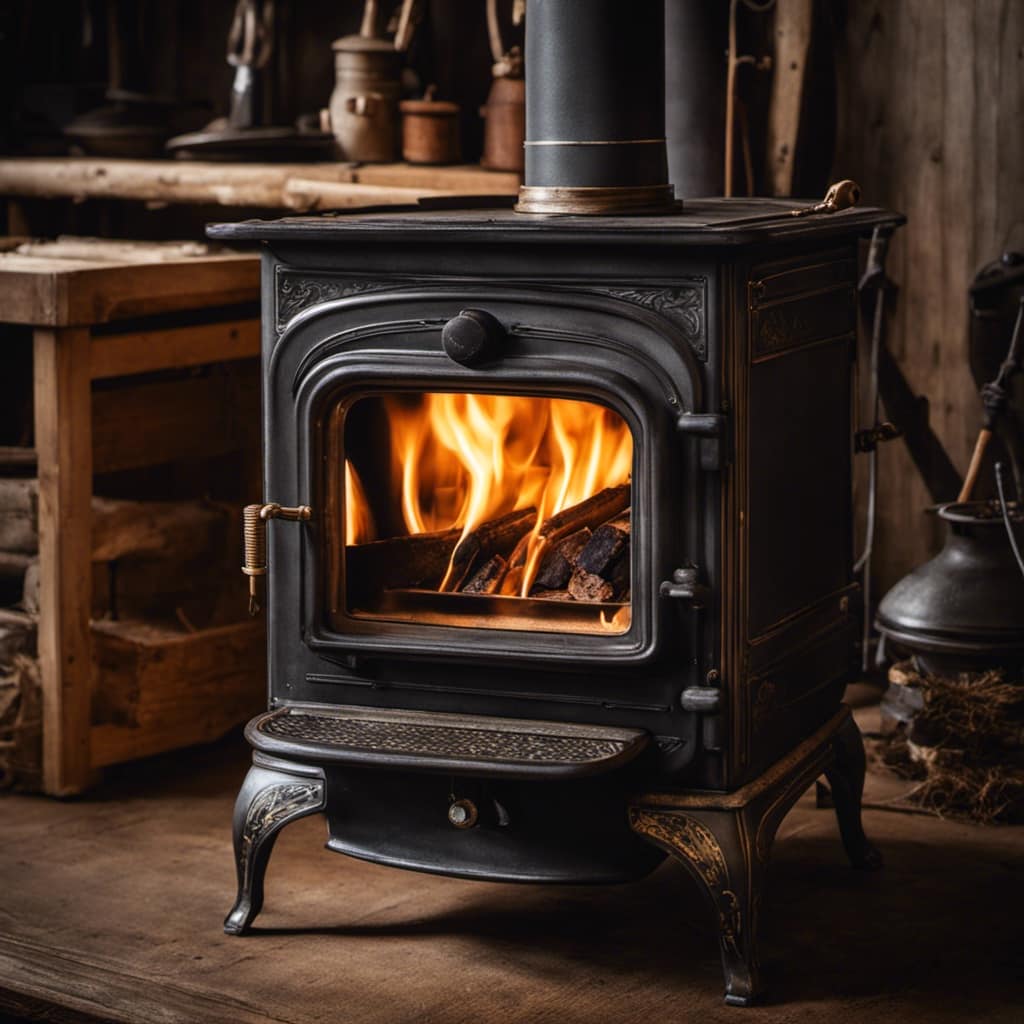
Before installing a wood stove chimney through a flat roof, it’s crucial to ensure that the roof is in good condition and can support the weight of the chimney system. Start by inspecting the roofing materials for any signs of damage or deterioration. Look for cracked or missing shingles, loose flashing, or any other issues that could compromise the integrity of the roof.
Additionally, it’s essential to consider waterproofing methods to prevent any leaks or water damage. Apply a high-quality roofing sealant around the area where the chimney will penetrate the roof. This will create a watertight seal and protect against moisture intrusion.
Installing the Chimney Through the Flat Roof
I carefully measure and mark the spot on the roof where the chimney will be installed. Installing a wood stove chimney through a flat roof requires precise planning and sealing techniques to ensure a proper roof penetration.
Here are the steps I follow:

Prepare the roof by removing any shingles or roofing material in the marked area. This creates a clean and even surface for the chimney installation.
Install a roof flashing around the chimney pipe. This flashing is essential for waterproofing and preventing any water leaks.
Apply a high-quality sealant around the flashing to create a tight and secure seal. This helps to prevent any air or water infiltration.
Ensuring Proper Ventilation and Safety Measures
Proper ventilation and safety measures are crucial for the efficient and safe operation of a wood stove.
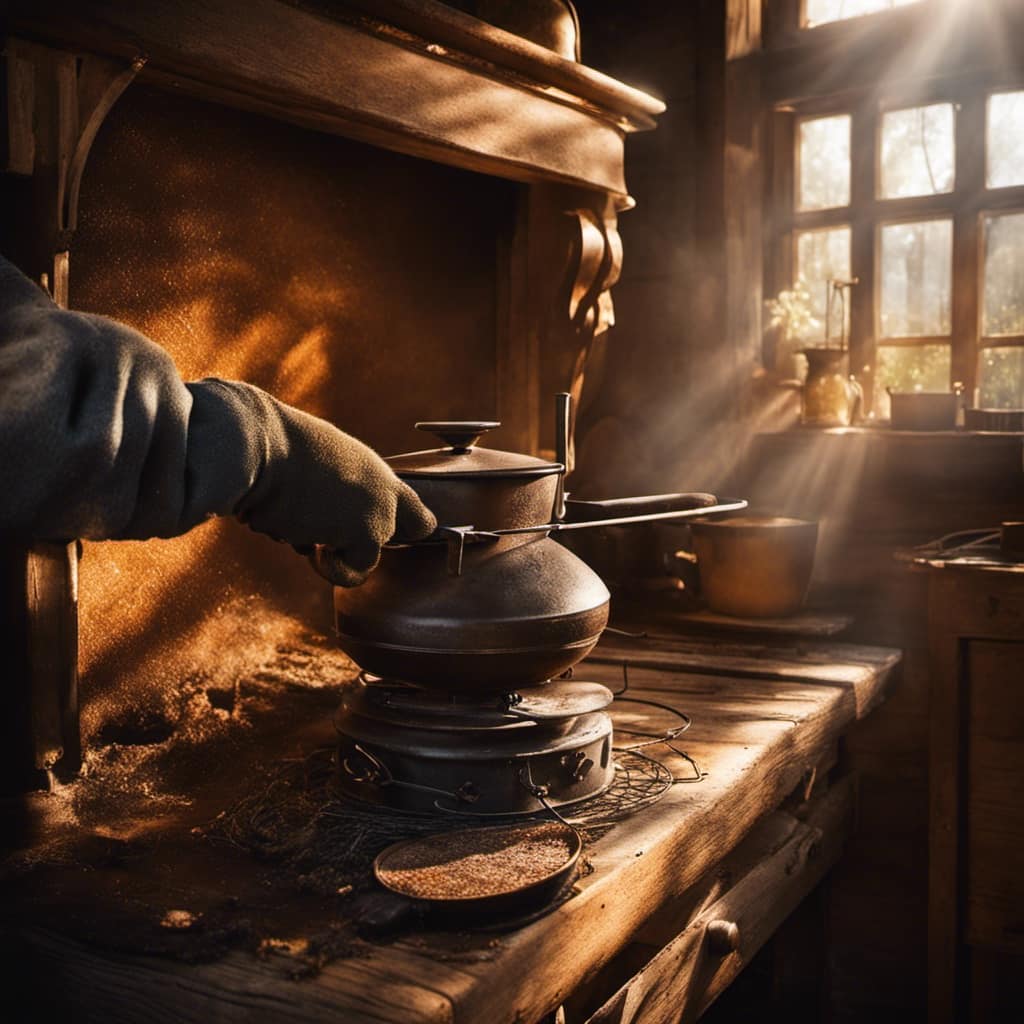
When it comes to installing a wood stove, ensuring proper insulation is essential. This helps to prevent heat loss and ensures that the stove works efficiently.
One important maintenance tip is to regularly clean the chimney to remove any creosote buildup, which can pose a fire hazard.
Additionally, it’s important to have a carbon monoxide detector installed near the wood stove to alert you to any potential leaks.
Another safety measure is to have a fire extinguisher nearby in case of emergencies.
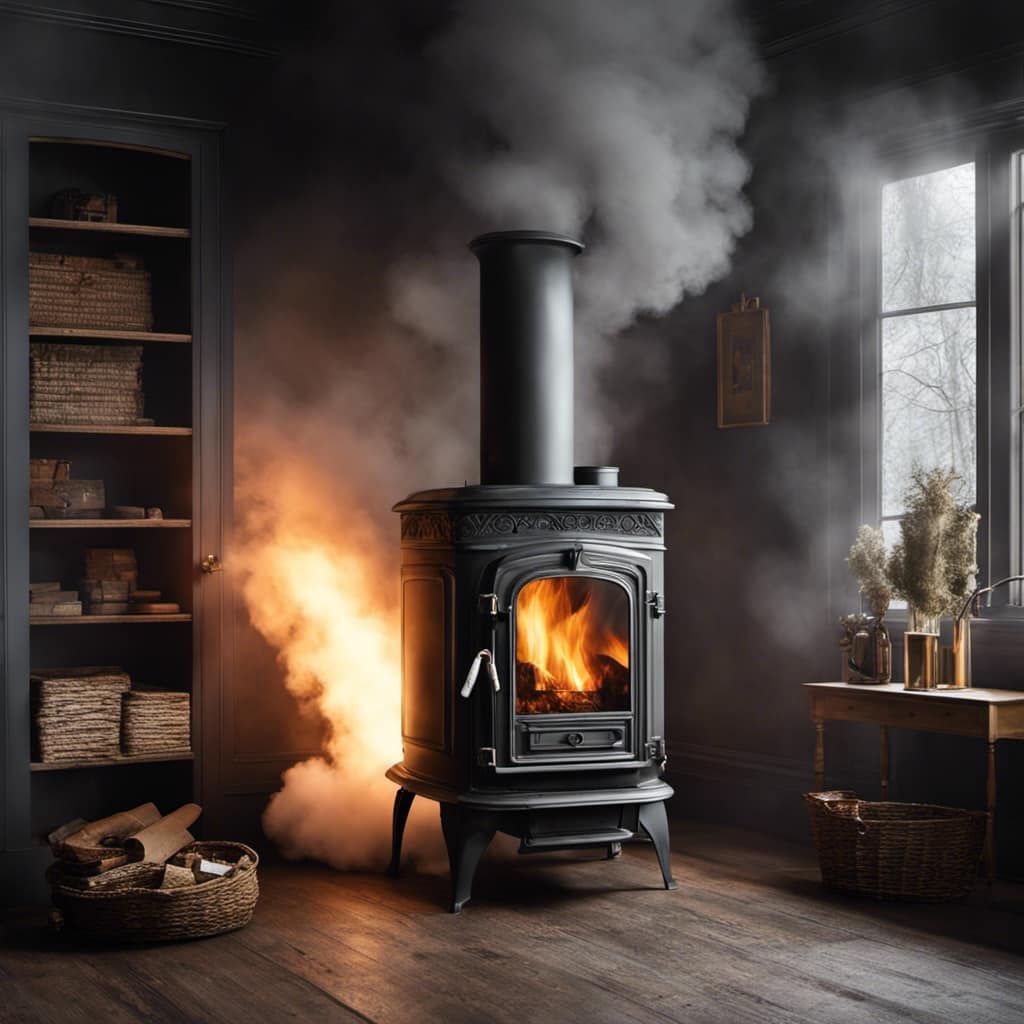
What is the Best Placement for a Wood Stove Chimney on a Flat Roof?
When considering the best chimney height for wood stove on a flat roof, it’s important to place the chimney at least 2 feet higher than any part of the building within a 10-foot radius. This minimizes the risk of down-drafts and ensures proper ventilation for the wood stove.
Frequently Asked Questions
Can I Install a Wood Stove Chimney Through a Flat Roof if I Have a Metal Roof?
Yes, you can install a wood stove chimney through a flat roof if you have a metal roof. The process involves properly sealing the chimney penetration and ensuring the necessary clearances are met.
How Often Should I Have My Wood Stove Chimney Inspected and Cleaned?
I make sure to have my wood stove chimney inspected and cleaned regularly. Neglecting this can lead to dangerous consequences. It’s crucial to prioritize the safety of my home and loved ones.
Can I Install a Wood Stove Chimney Through a Flat Roof if I Have a Low Slope Roof?
Yes, you can install a wood stove chimney through a flat roof with a low slope. Here are some chimney installation tips to ensure a safe and efficient setup.
Do I Need to Install a Chimney Cap on My Wood Stove Chimney?
I definitely recommend installing a chimney cap on your wood stove chimney. It offers numerous benefits like preventing animals from entering, reducing drafts, and protecting against rain and debris. Choosing the right chimney cap is crucial for proper functionality.
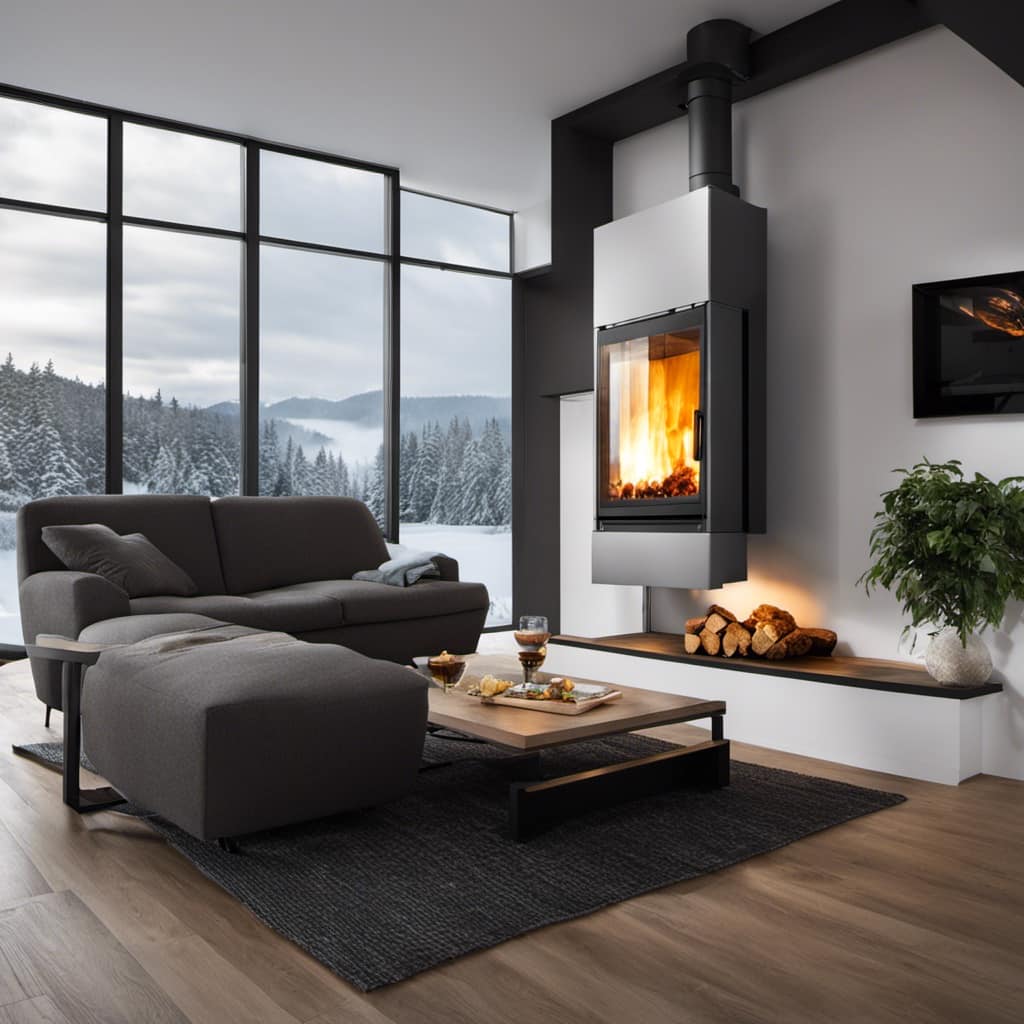
What Are the Signs That Indicate My Wood Stove Chimney May Be Leaking or Causing Water Damage to My Roof?
If your wood stove chimney is leaking, signs may include water stains on the ceiling, damp walls, or a musty smell. This can cause serious roof damage, such as rot or mold growth.
Conclusion
After carefully assessing the roof structure and selecting the appropriate chimney system, preparing and installing a wood stove chimney through a flat roof requires attention to detail and safety measures.
By ensuring proper ventilation and following the precise installation instructions, homeowners can enjoy the warmth and comfort of their wood stove while maintaining the structural integrity of their flat roof.
Trusting in the knowledge and expertise of professionals can provide peace of mind and a cozy atmosphere for years to come.
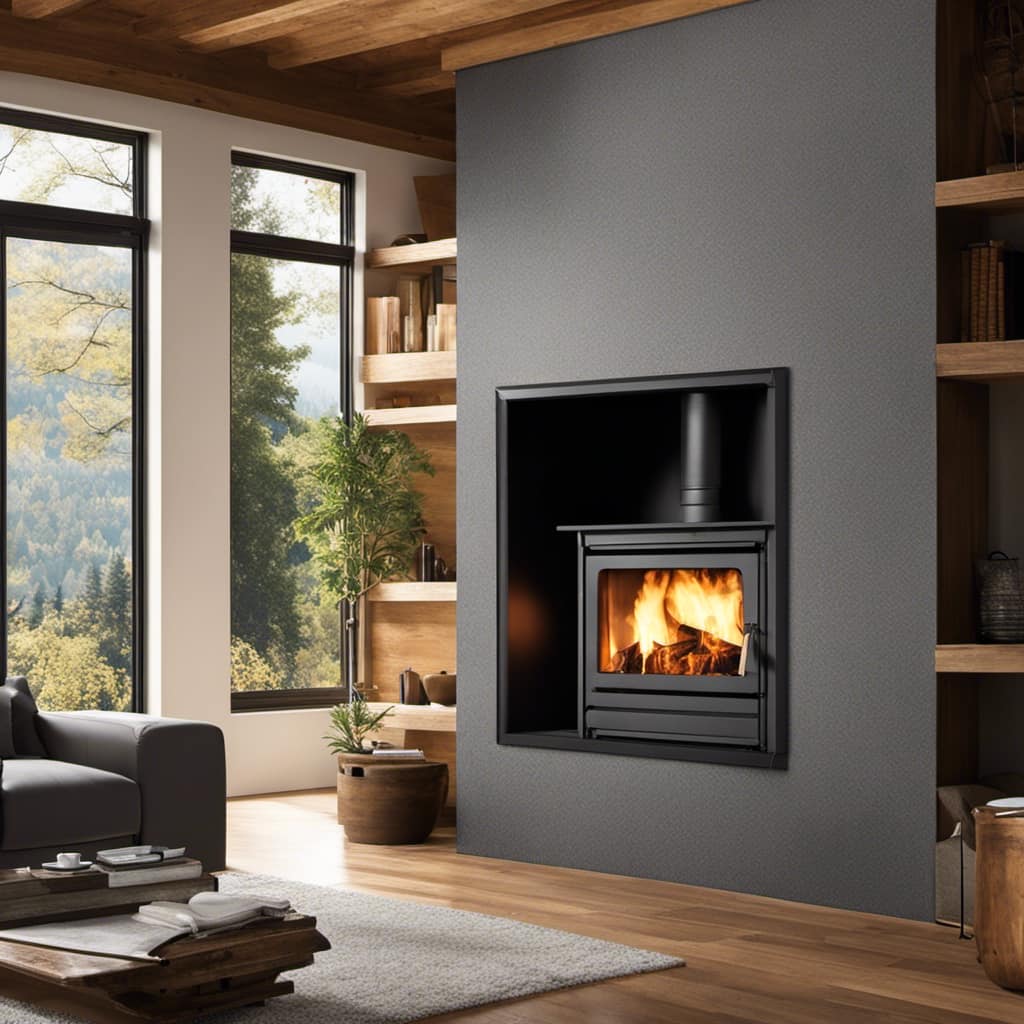
Growing up surrounded by the vast beauty of nature, Sierra was always drawn to the call of the wild. While others sought the comfort of the familiar, she ventured out, embracing the unpredictable and finding stories in the heartbeat of nature.
At the epicenter of every remarkable venture lies a dynamic team—a fusion of diverse talents, visions, and passions. The essence of Best Small Wood Stoves is crafted and refined by such a trio: Sierra, Logan, and Terra. Their collective expertise has transformed the platform into a leading authority on small wood stoves, radiating warmth and knowledge in equal measure.





